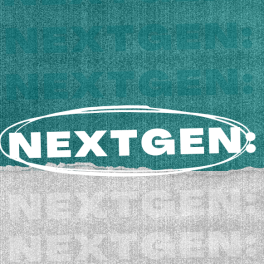
In recent years, the use of generative AI, particularly in the creative sector, is heavily criticised. Many companies choose to cut corners and use AI to generate their marketing materials rather than hiring actual creatives, and many even try to sell AI assets such as images or videos while passing them as their own. For animation, there are now countless programs out there that use AI to turn 2D images into 3D, or increase the frame rate of animation sequences by inserting AI-generated frames, or even generate entire animated videos off a single word prompt. Prospective animators may feel trepidation towards these developments. Will completely AI-generated animated movies soon hit theatres? Will animators eventually become obsolete?
Not at all. I believe that AI is merely a new tool for animators to use, not something to replace them entirely. After all, animators have just the quality that AI lacks, perhaps the most important quality for storytelling: a human touch.
For example, one of my favourite animated movies is The Mitchells vs. The Machines, a story about the Mitchell family dealing with a machine uprising. It’s a family movie that is also uproariously funny, has great representation, and has a cute, heartwarming ending. And rather than having just animated characters interacting in an animated environment, the animators add some flair.
Our main protagonist is Katie Mitchell, an avid filmmaker who’s resourceful, optimistic and endlessly creative with a vivid imagination. The story tells us this not just with its events or dialogue, but also with its animation. Katie’s inner monologue is accomopanied by her quirky, colourful doodles scrawled over the frames, giving you a glimpse into her world. It creates opportunities for laugh-out-loud moments but also enhances the audience’s understanding of the character.

Another of my favourite animated movies is Spiderman: Into the Spiderverse, where our protagonist Miles Morales is suddenly given powers from a radioactive spider bite and other versions of Spiderman from other parallel universes end up in his universe and teach him how to become a proper Spiderman. It’s an explosive and colourful story, with regards to its visuals, characters, plot and music, and it has an incredible blend of humour, action and heartfelt moments.
While this is partially because of the stellar writing and performances of the voice actors, it is also definitely because of beautiful animation. If AI had been given its script, it could have told the same story with just some standard animation. But the Spiderverse animators really lend their creativity to these sequences, giving it that something special. Spiderman wasn’t always in movies- he’s originally a comic book character! And old comic books were printed with a series of coloured dots, which would sometimes be printed off-centre, creating “printing error” dots of different colours. So to create a sense of depth in the movie, they used these same dots to make parts of the background look blurry but also create a really nostalgic comic-like effect.

Another feature of the movie I really love is its choice of frame rate. Most animations are done in 24 frames per second, to create a smooth animation from the quickly switching images. But in some scenes, especially when Miles first starts out his training, his frames actually only switch 12 times a second, making the transitions more clumsy. While AI would most likely consider 24 fps to be more ideal, Miles being animated at 12 fps tells a story, showing us how he’s struggling to keep up. Only when he fully steps into his role as Spiderman does his frame rate get bumped up to 24 fps, showing him as the confident superhero he finally becomes. It’s a beautiful way to show a character arc in other ways beyond just the plot. Really takes “show, don’t tell” literally, doesn’t it? Using “choppy” and “imperfect” animation to enhance the story like this truly is something only a human could have come up with.
Because what is that ‘human touch’, exactly? It’s creativity, it’s innovation. It’s coming up with something you’ve never seen before. With AI’s algorithms generating content purely based on its collected data, that’s something AI can’t do. But even beyond that, it’s also perspective, and the empathy that comes with it. Many stories can entertain their audience with flashy visuals, but the best stories touch people’s hearts when they can relate to them and really see through the character’s eyes. The beauty of human animators is that they can empathise both with the characters but also with their viewers, allowing them to create a reflection of the human experience that resonates with anyone watching.
Ultimately, Into the SpiderVerse and the Mitchells vs the Machines (and many other great animated movies) understand what makes a great animated movie. It’s more than just smooth sequences or flawless rendering that AI will try to provide. It’s a soul.
Support Young Creators Like This One!
VoiceBox is a platform built to help young creators thrive. We believe that sharing thoughtful, high-quality content deserves pay even if your audience isn’t 100,000 strong.
But here's the thing: while you enjoy free content, our young contributors from all over the world are fairly compensated for their work. To keep this up, we need your help.
Will you join our community of supporters?
Your donation, no matter the size, makes a real difference. It allows us to:
- Compensate young creators for their work
- Maintain a safe, ad-free environment
- Continue providing high-quality, free content, including research reports and insights into youth issues
- Highlight youth voices and unique perspectives from cultures around the world
Your generosity fuels our mission! By supporting VoiceBox, you are directly supporting young people and showing that you value what they have to say.





